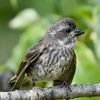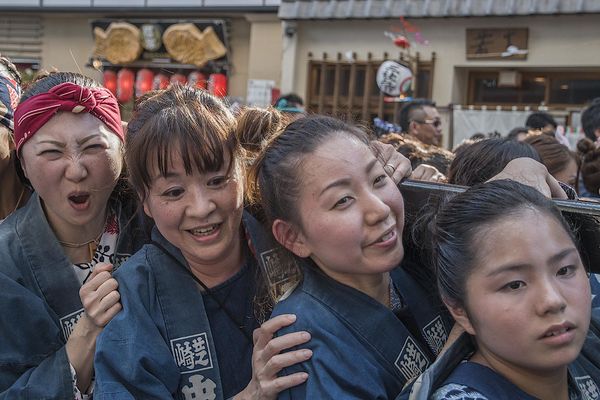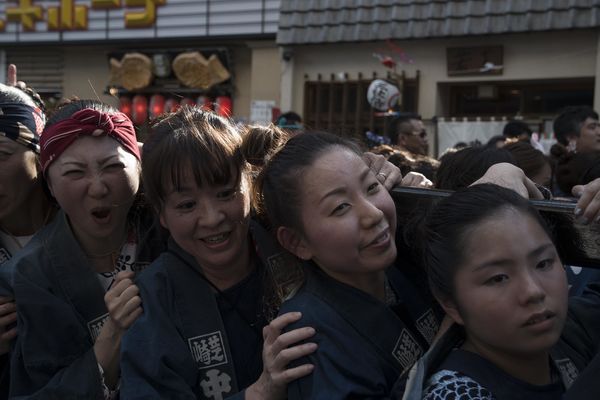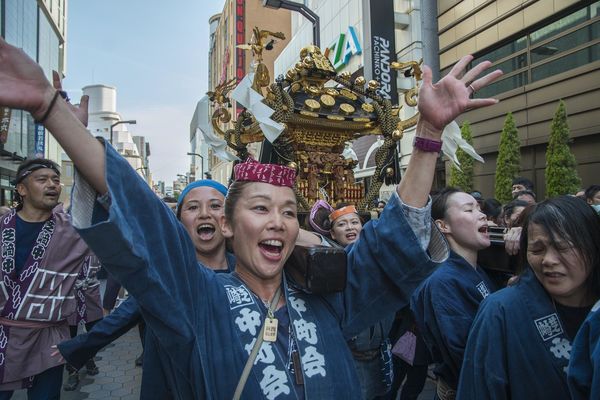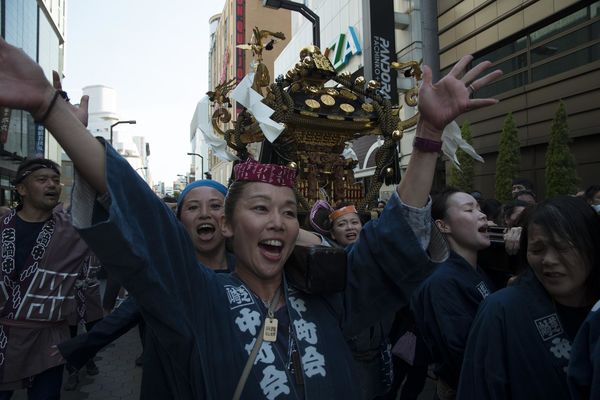ISO invariance
May 18, 2016 16:03:59 #
Yes, I searched UHH to see if it was discussed before. It does not seem to have been - as a thread - (one entry in the link section). I also read about it on the WEB.
Basically my understanding is:
Only a few cameras offer this (not advertised) option
Instead of using the camera ISO settings (and camera processor) you use the software to adjust the brightness/exposure. This has the advantage of allowing a local adjustment (PS CC masking and or blend option).
I can see this working rather well with a raw file but not at all with a JPG. Since none of my camera is ISO invariant I have no way to test this, I assume a BIG NO!!!! is the answer due to the limitation of the format. I have been surprised before so... If anyone has the answer and tried it. can you post samples?
Basically my understanding is:
Only a few cameras offer this (not advertised) option
Instead of using the camera ISO settings (and camera processor) you use the software to adjust the brightness/exposure. This has the advantage of allowing a local adjustment (PS CC masking and or blend option).
I can see this working rather well with a raw file but not at all with a JPG. Since none of my camera is ISO invariant I have no way to test this, I assume a BIG NO!!!! is the answer due to the limitation of the format. I have been surprised before so... If anyone has the answer and tried it. can you post samples?
May 18, 2016 16:10:38 #
DGStinner
Loc: New Jersey
Like you said, only a few cameras have this capability. Since I only own Canon cameras and they do not have the capability, I have not tested it.
Not sure if you seen the following:
http://improvephotography.com/34818/iso-invariance/
Not sure if you seen the following:
http://improvephotography.com/34818/iso-invariance/
May 18, 2016 16:26:33 #
DGStinner wrote:
.../... Not sure if you seen the following:
http://improvephotography.com/34818/iso-invariance/
http://improvephotography.com/34818/iso-invariance/
I have, Thank you.
May 18, 2016 16:39:58 #
This is really ETTL. During the day use ETTR and at night use ETTL. And of course there are those who only know "get it right in the camera".
Very interesting - thanks for posting.
Very interesting - thanks for posting.
May 18, 2016 17:02:08 #
ecobin wrote:
This is really ETTL. During the day use ETTR and at night use ETTL. And of course there are those who only know "get it right in the camera".
Very interesting - thanks for posting.
Very interesting - thanks for posting.
It is NOT ETTL. You can use ETT? with all cameras and all ISO.
This is not about getting it right in camera either as it is right.
This uses a single ISO setting for everything. Basically ISO becomes obsolete and from there ETT? I do not see the use. Then again I do not have a camera that can use this type of setting so I cannot experiment.
May 18, 2016 18:44:58 #
Rongnongno wrote:
Yes, I searched UHH to see if it was discussed bef... (show quote)
At the risk of breathing life into this issue, can you identify which cameras don't use ISO settings?
May 18, 2016 19:30:54 #
Kmgw9v wrote:
At the risk of breathing life into this issue, can you identify which cameras don't use ISO settings?
It's not that some cameras don't use ISO settings, it's the idea of always using the base ISO for ALL low light shots, then using PP to brighten them to the same point that they would be as if you had set the ISO to a higher number. They say (I don't know if true), that SOME cameras' results are identical in terms of noise and detail. So, the test is to take a shot at ISO 100 that may appear way "under exposed". Then take the same shot with a higher ISO so it appears to be "properly exposed". Does the first shot match the second in quality after PP for brightness? Look at the link posted by DGStinner for an example.
May 18, 2016 19:58:46 #
This link is to a site that has posted technical specs of many camera's sensors. This does not state which cameras are ISO invariant but the information is relevant to the topic.
http://www.sensorgen.info/
http://www.sensorgen.info/
May 19, 2016 06:23:05 #
ISO invariance basically means that, for instance, you can shoot at ISO 100 and underexpose three stops (and then raise exposure three stops in post), and get the same results as you would exposing normally at ISO 800.
The advantages of this are obvious: three EV more headroom in the highlights. I have a Nikon D800E which is close to ISO invariant, and for me that is the single best feature of the camera.
This weekend I was shooting a street festival in Tokyo where participants carry portable shrines through the streets. They were often in shadow in the streets, with bright sun in some parts of the frame and a bright sky, or I was shooting them against the light. It all moved very fast and good metering was impossible, so I underexposed heavily and recovered the darks in post. Of course there was slightly more noise in the dark than if I had exposed normally for mids and blown the highlights, but nothing like most cameras. This is quite important to the look I want. I used to do a lot of HDR but these days I'm finding I can get the same range I'm looking for in about 50% of situations where I had to use bracketing--and no worry about ghosting. For me this is worth a lot.
The advantages of this are obvious: three EV more headroom in the highlights. I have a Nikon D800E which is close to ISO invariant, and for me that is the single best feature of the camera.
This weekend I was shooting a street festival in Tokyo where participants carry portable shrines through the streets. They were often in shadow in the streets, with bright sun in some parts of the frame and a bright sky, or I was shooting them against the light. It all moved very fast and good metering was impossible, so I underexposed heavily and recovered the darks in post. Of course there was slightly more noise in the dark than if I had exposed normally for mids and blown the highlights, but nothing like most cameras. This is quite important to the look I want. I used to do a lot of HDR but these days I'm finding I can get the same range I'm looking for in about 50% of situations where I had to use bracketing--and no worry about ghosting. For me this is worth a lot.
May 19, 2016 07:08:18 #
Nikon's D810, D750 and, I assume, D500 offers in-camera processing of raw files. to White Balance and Exposure Compensation are included in the adjustments but not ISO.
May 19, 2016 08:10:04 #
kymarto wrote:
ISO invariance basically means that, for instance,... (show quote)
That makes sense. Thanks for the explanation.
May 19, 2016 08:54:01 #
Kmgw9v wrote:
That makes sense. Thanks for the explanation.
By way of example, here is a shot at that festival. It was in pretty deep shadow, with highlight on the face of the woman in the back and in the hair of the woman in front of her. I shot it a couple of stops dark, which allowed me to recover detail in the highlights, and then I raised the exposure in ACR by those couple of stops, additionally raising the shadows a bit more so that the deepest tones were not crushed. Some people may find this artificial, but I like it and I like being able to see tones from top to bottom, even at the expense of some tonal compression. You can see that there is not excessive shadow noise, even though they were raised several stops. In addition this was quite aggressively sharpened with Piccure+, which of course accentuates whatever noise is present.
This was shot at ISO 100. Had I shot it at nominal exposure at that ISO there would have been a bit less noise, but the highlights would be gone. If I had shot it at ISO 400 the noise would be the same and the highlights would still be gone. Shooting it at ISO 100 underexposed by two EV allowed me to shoot it at the same aperture/shutter speed combination that I would have used at ISO 400, and with approximately the same noise that I would have gotten at ISO 400, and I get to keep the highlights to boot :~])
Below is SOOC for comparison...
Then two more--first is with quick adjustments in ACR and SOOC below.
May 19, 2016 09:07:09 #
zigipha
Loc: north nj
DGStinner wrote:
Like you said, only a few cameras have this capability. Since I only own Canon cameras and they do not have the capability, I have not tested it.
Not sure if you seen the following:
http://improvephotography.com/34818/iso-invariance/
Not sure if you seen the following:
http://improvephotography.com/34818/iso-invariance/
The spine on the middle book a bilda sagrada, you can see more noise on the spine on the 200 vs the 3200. Although the difference is not nearly as bad as 5dmkii
May 19, 2016 09:09:30 #
zigipha
Loc: north nj
Rongnongno wrote:
It is NOT ETTL. You can use ETT? with all cameras and all ISO.
This is not about getting it right in camera either as it is right.
This uses a single ISO setting for everything. Basically ISO becomes obsolete and from there ETT? I do not see the use. Then again I do not have a camera that can use this type of setting so I cannot experiment.
This is not about getting it right in camera either as it is right.
This uses a single ISO setting for everything. Basically ISO becomes obsolete and from there ETT? I do not see the use. Then again I do not have a camera that can use this type of setting so I cannot experiment.
If you have fixed iso and want to have the camera NOT compensat automatically with aperature/shutter speed, then this is basically shooting in manual exposure mode...no? What am I missing?
May 19, 2016 09:19:07 #
zigipha wrote:
If you have fixed iso and want to have the camera NOT compensat automatically with aperature/shutter speed, then this is basically shooting in manual exposure mode...no? What am I missing?
You simply set the exposure compensation for however many stops you want to brighten it later. The camera still determines exposure automatically, but X number of EV below its normal exposure, and then you set the exposure higher by the same X number of stops in post.
If you want to reply, then register here. Registration is free and your account is created instantly, so you can post right away.




